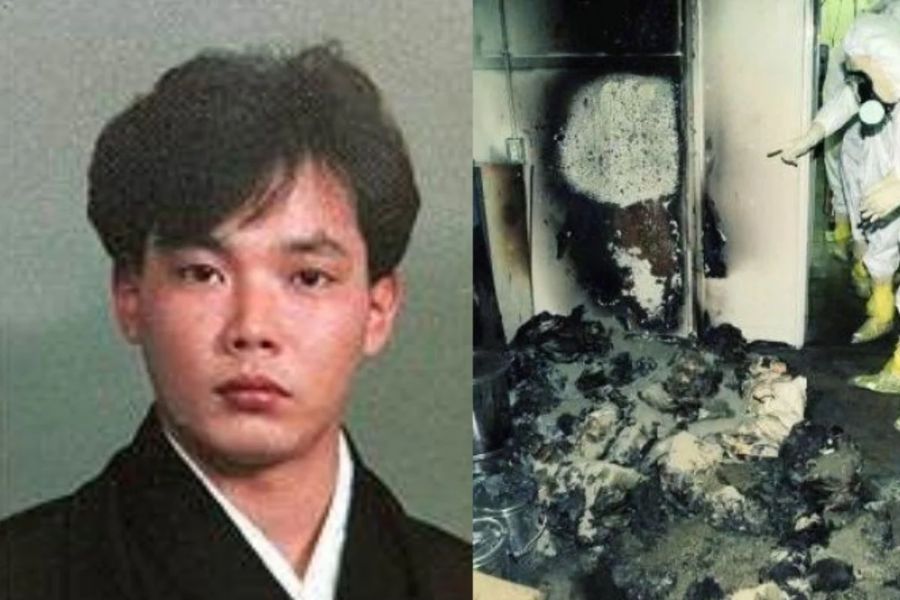Hisashi Ouchi: The Survivor Of A Nuclear Tragedy
When we think about survival against all odds, the story of Hisashi Ouchi stands out as one of the most harrowing yet inspiring tales. Hisashi Ouchi was a victim of a catastrophic nuclear accident in Japan in 1999, which left him with devastating injuries and a battle against insurmountable odds. As we delve into the current status of Hisashi Ouchi, we uncover not just the details of his tragedy, but also the resilience of the human spirit in the face of unimaginable adversity.
Understanding Hisashi Ouchi’s situation goes beyond just the tragic event; it involves examining the medical and ethical implications of his case. Hisashi Ouchi has become a symbol of the consequences of industrial negligence and the complex interplay between human life and technology. The question remains, what is the legacy of Hisashi Ouchi now, and how has his story impacted the world since that fateful day?
As we explore the present-day reality of Hisashi Ouchi, we must consider the advancements in medical science, the discussions surrounding nuclear safety, and the ongoing dialogue about human rights in medical treatment. In a society that often views victims through a lens of tragedy, Ouchi’s story invites us to reflect on hope, resilience, and the quest for dignity in the aftermath of disaster.
Who is Hisashi Ouchi?
Hisashi Ouchi was born on March 5, 1965, in Tokyo, Japan. He worked as a technician at the Tokaimura nuclear facility, where the accident occurred. Hisashi was known to be diligent and dedicated to his work, and he was well-regarded by his peers. However, on September 30, 1999, a criticality accident occurred due to improper handling of uranium, leading to a release of lethal radiation.
What Happened During the Accident?
The accident involved the mixing of uranium in a way that caused a chain reaction, resulting in a massive release of radiation. Hisashi Ouchi was exposed to an estimated dose of 17 sieverts of radiation, which is far beyond the lethal threshold for humans. The incident not only took a toll on Ouchi but also raised alarms about nuclear safety protocols in Japan.
What Were the Immediate Consequences for Hisashi Ouchi?
Following the accident, Hisashi Ouchi was rushed to the hospital, where he received emergency treatment. His condition was critical, and he suffered from severe radiation burns, organ failure, and other life-threatening issues. Despite the heroic efforts of medical staff, Ouchi's prognosis was grim.
What Treatments Did He Undergo?
Hisashi Ouchi underwent numerous medical procedures, including blood transfusions, skin grafts, and experimental treatments. The medical team faced a daunting task as they worked to treat his injuries while also managing the effects of radiation exposure. The case drew international attention and sparked debates about the ethics of experimental treatments on critically ill patients.
How Did Hisashi Ouchi’s Condition Progress Over Time?
Despite the medical interventions, Hisashi Ouchi's condition deteriorated significantly over time. He developed infections, and his body struggled to cope with the extensive damage caused by radiation. The public and media closely followed his progress, and many were left wondering about the implications of such catastrophic injuries on human life.
What is Hisashi Ouchi’s Current Status?
As of now, Hisashi Ouchi has passed away. He succumbed to his injuries on December 21, 1999, after a prolonged battle in the hospital. His story, however, lives on as a powerful reminder of the need for stringent safety measures in nuclear facilities and the ethical considerations in medical treatment.
What Lessons Can We Learn from Hisashi Ouchi’s Tragedy?
The story of Hisashi Ouchi raises important questions about industrial safety and the responsibilities of companies handling hazardous materials. Increased oversight and regulation in the nuclear industry have been a direct response to this tragedy, highlighting the need for accountability and the prioritization of human life over profit.
How Has Hisashi Ouchi’s Story Impacted Nuclear Safety Regulations?
In the wake of the Tokaimura accident, Japan strengthened its nuclear safety protocols, emphasizing the importance of safety training and emergency preparedness. Hisashi Ouchi’s case has served as a cautionary tale, pushing both the public and policymakers to advocate for reforms in nuclear safety regulations.
What is Hisashi Ouchi’s Legacy?
Hisashi Ouchi’s legacy goes beyond the tragedy of his death; it serves as a reminder of the fragility of human life in the face of technological advancements. His story continues to inspire discussions on ethics in medicine, the importance of safety in nuclear industries, and the need for compassion in the treatment of victims.
In conclusion, the question of "Hisashi Ouchi now" transcends time, as it reflects not only on his personal journey but also on the societal implications of industrial accidents and medical ethics. Hisashi Ouchi's story will remain a pivotal chapter in the discourse on safety, care, and the enduring resilience of the human spirit.
Unveiling The Life And Legacy Of Wentworth Miller
Fantasia Barrino: A Journey Of Resilience And Triumph
Exploring Justin Trudeau's Net Worth: A Comprehensive Look


